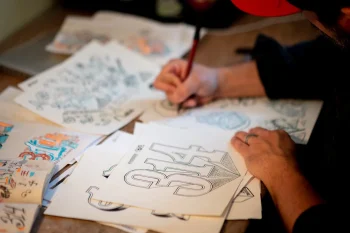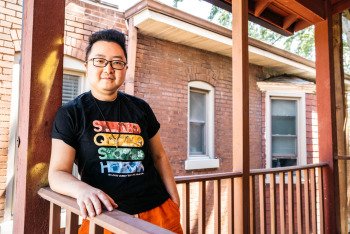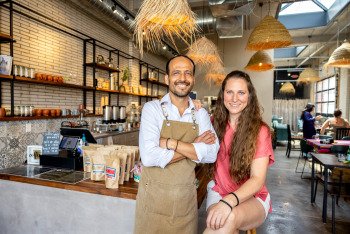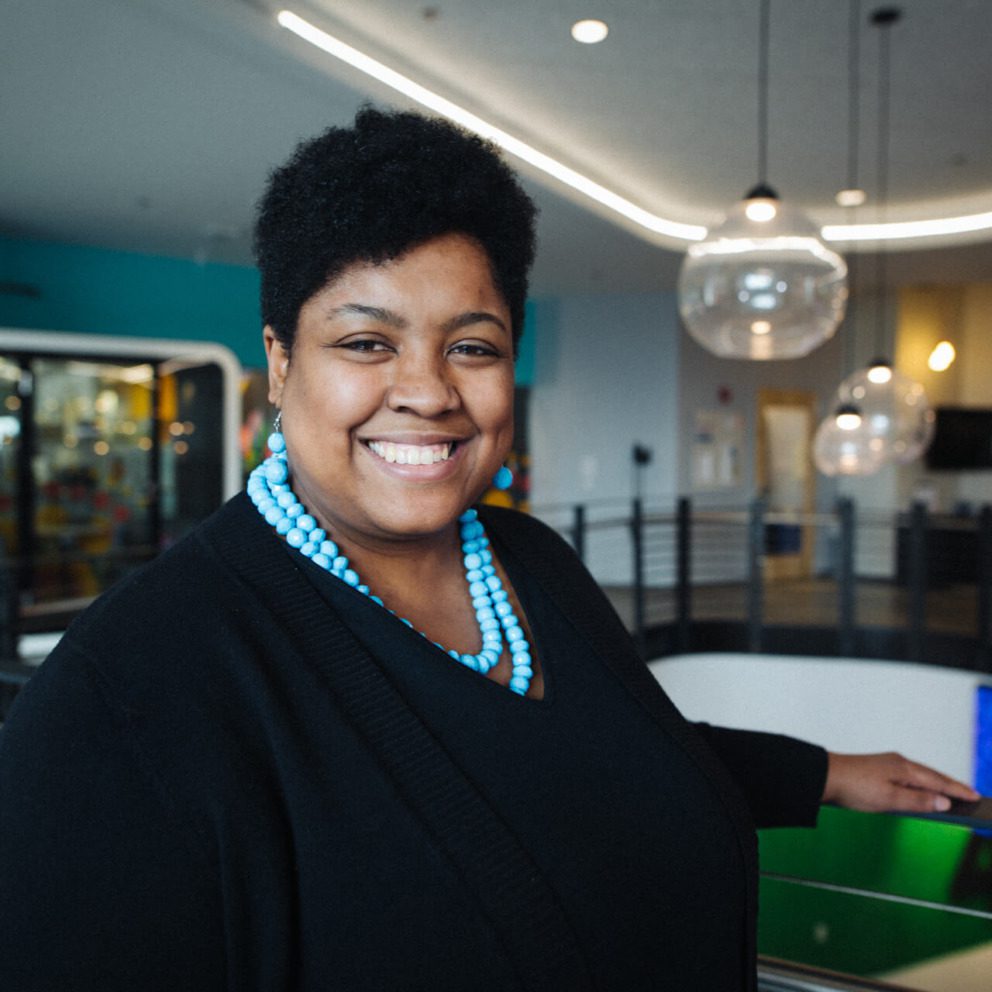Building Bridges
Natissia Small, Ed.D., reduces barriers for St. Louis youth to pursue and succeed in higher education.
It all started with a college tour.
As an undergraduate at Southeast Missouri State University, Natissia Small worked as a campus tour guide, giving her a firsthand look into the students (and their parents) considering higher education, and what resources they were missing.
Today, Small is Vice Provost for Access, Academic Support and Workforce Integration at the University of Missouri–St Louis, and among other things, she oversees the Precollegiate Student Support Services, known as the Bridge Program.
“The Bridge Program focuses on those student experiential activities that are really critical for students to be able to have strengths in and to be able to help them to navigate all of those different arenas that surround the college transition process,” says Small.
Bridge provides services to students whether they plan to attend UMSL or not, and Small estimates there isn’t an institution you can think of that hasn’t had one of the program’s graduates. Ultimately, Small and her team want to reduce or remove barriers to secondary education, especially for underserved communities.
“As we continue to look at what’s happening in this moment in society,” Small says, “we have to make sure that we’re doing this for every single student from a range of academic backgrounds, whether it’s public, private or homeschooled, from every racial and ethnic and socio-economic group. Creating this type of opportunity for students and parents to partake in this program has been really key. That’s one of the things that motivates me the most in doing this work.”
The UMSL staff of five serves more than 5,000 St. Louis-area students and families each year, with the help of community school partners. Since 2003, 100% of Bridge’s students have gone on to attend college – a staggering success rate that speaks to the team’s dedication.
UMSL debuted this groundbreaking program in 1986, and Small began working as a counselor in the program in 2003. Its biggest component is the Express Scripts Saturday Academy: From March through October, high school students attend a 10-Saturday workshop series focused on math, science, written and oral communication as well as career development and college planning, including financial aid and admissions.
Bridge also offers a Summer Academy for high school students, recently launched a Middle School Academy, and even offers a four-part Parent Academy. It facilitates after-school math and science clubs at several high schools, most notably the NextJenn STEM TEAM at Jennings High School, whose members have participated in several competitions.
Though a little over half of Bridge’s graduating seniors attend the Saturday Academy, there are even more specialized programs that work to expose students to an array of post-grad options. Eyes on Diversity, for example, provides hands-on activities around optometry. The Advocacy Leadership Program demonstrates “the impact of adverse childhood events and how students can be future change agents” by exposing them to a number of related career paths, such as child welfare, education, and medical or legal advocacy.
The program is open to all students in the St. Louis region, and Small’s team works with partners at K-12 schools from Festus to Francis Howell.
“There’s certainly a lot of word of mouth that has been taking place over a number of years,” says Small. “Our coordinators are actually going into the school buildings, presenting to students and parents. That’s an amazing partnership, and we’re very grateful that our schools trust us and provide that opportunity.”
Kelly Taylor teaches in the Hazelwood school district as well in the Bridge program, and has seen many of her students reap the benefits of Bridge’s unique curriculum.
“One of the great things about the Bridge program is it’s not just about teaching curriculum or content, it’s teaching students how to think critically and how to advocate for themselves – how to see themselves in a different light,” says Taylor.
This kind of education is particularly helpful for students who may struggle with traditional classroom instruction or feel that they’re not “good” at school.
“There’s brilliance in all types of students and that’s what the Bridge program helps kids to see, that there’s space for everyone and different avenues to take to achieve your goals,” says Taylor. “Sometimes the journey isn’t a straight one.”
Bridge went virtual due to the pandemic, and though the team is excited to be back in person, the pivot to virtual learning has allowed Small to reach students in rural areas in Missouri and beyond. For Small, this is an exciting look at what Bridge could become over the coming decades.
“I see Bridge continuing to grow leaps and bounds among the St. Louis community,” she says. “I would love to see our Bridge program reaching to our rural communities and provide the same access opportunities for them; I would love to see us maximize opportunities throughout the state. I think the opportunities are really endless.”
However, educational support is just one aspect of the program. The team strives to focus just as much on what Small calls “socio-emotional wellbeing.”
“Oftentimes we focus very much so on the academic needs of students, and we don’t really pay attention to the fact that there’s this other component that’s just as critical for us to address, and that is the whole student,” Small says. “Being able to provide families with access to counseling – whether it be through an avenue that we offer here on campus or in the community – is really important. You cannot focus on the whole student if you don’t include that other aspect.”
Ultimately, this holistic approach aims to set students up for lifelong success, not just in academia. Small stresses that Bridge is so much more than a tutoring service.
“It’s not only providing them with the critical academic skills that they’re going to need when they enter college, but it’s also reaffirming the work that they’re being taught in their high schools,” she says. “And for many it’s helping them to have a leg up in the coursework that they’re being taught while they’re in high school.”
“That’s one of the other amazing things about the Bridge program: It is focusing on students to matriculate to a college that’s a great fit for them,” Small says, noting that about half of the graduating students do choose UMSL. “And other students are attending institutions that we maintain partnerships with to make sure that as students from the Bridge program matriculate there, that they’re going to be provided with the same resources that we would provide them if they were going to choose UMSL. We’re very proud of that.”
Small traces her passion back to her own college days. She admits that doing this work requires a lot of commitment and sacrifices, but ultimately finds it intensely meaningful.
“What I personally find to be the most rewarding is when we have Bridge alumni to come back, or we read about them in the newspaper – of what they’re doing in their career field and how they’re choosing to give back to the community,” Small says. “Undoubtedly, watching them walk across the stage or receive a college invitation for their graduation are some of the most rewarding moments.
“It only motivates us to continue to do more.”
Join the Story
Check out the options offered by UMSL’s Bridge Program.








